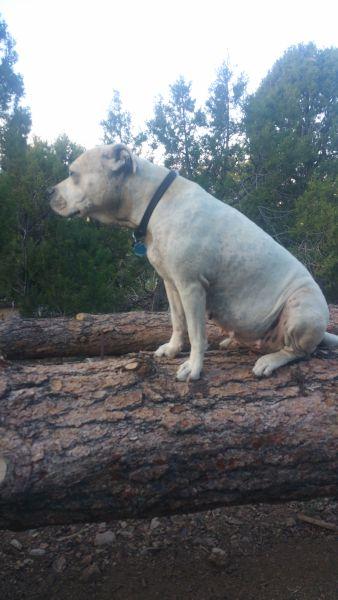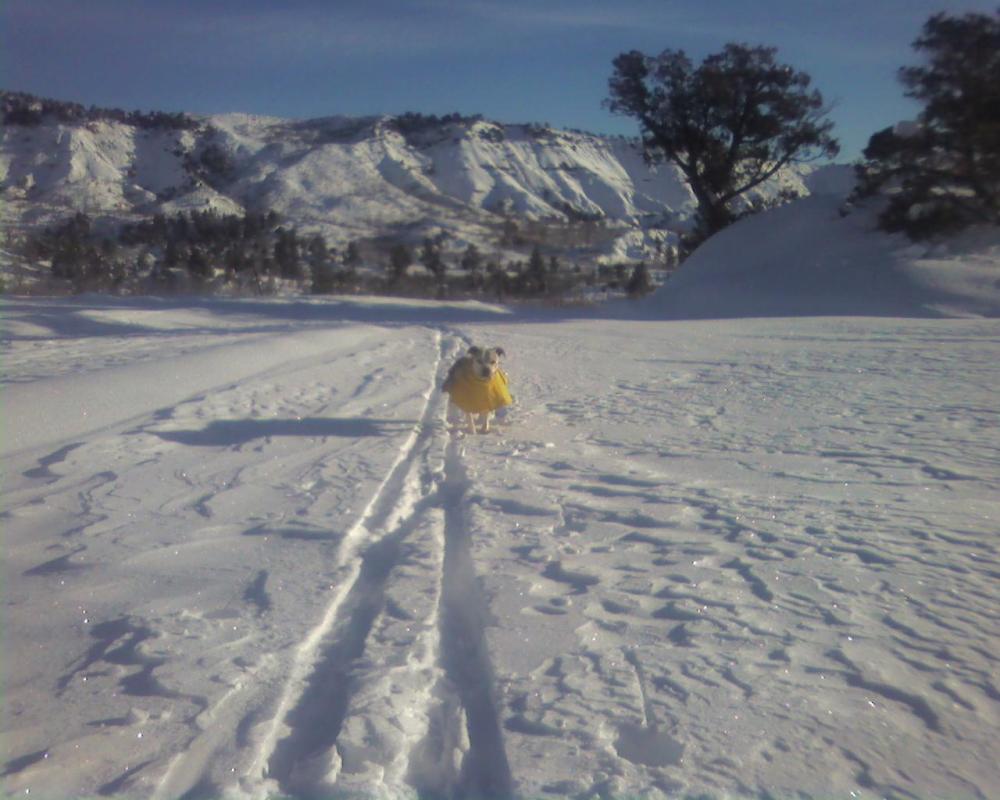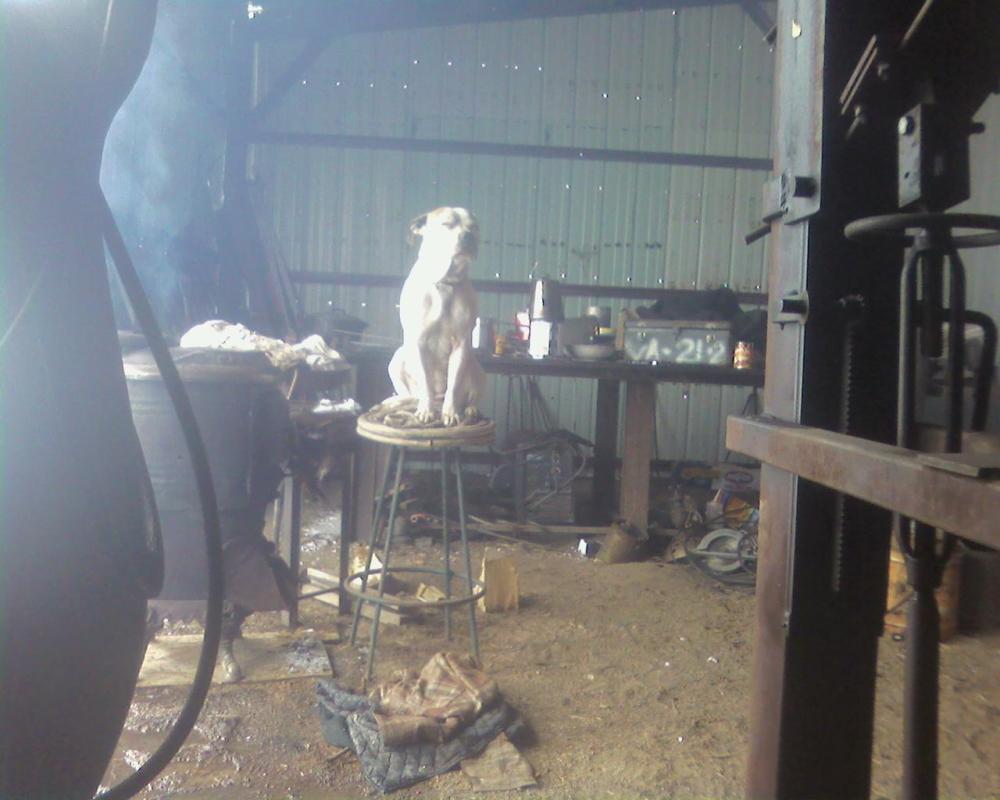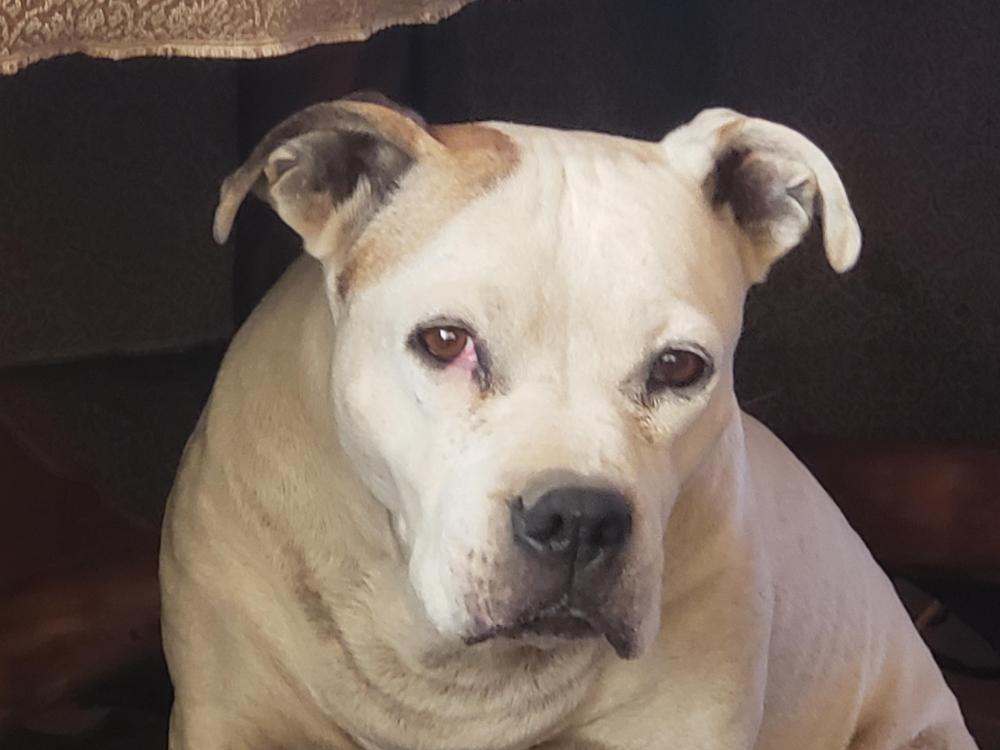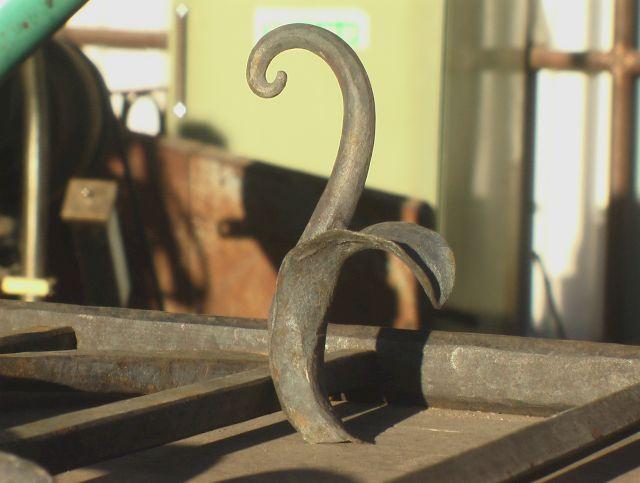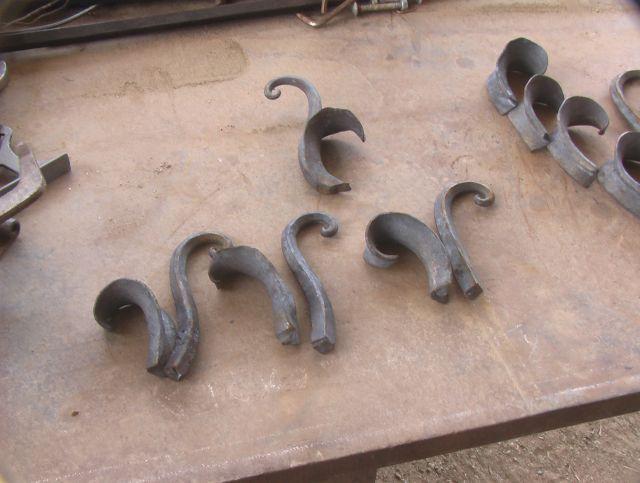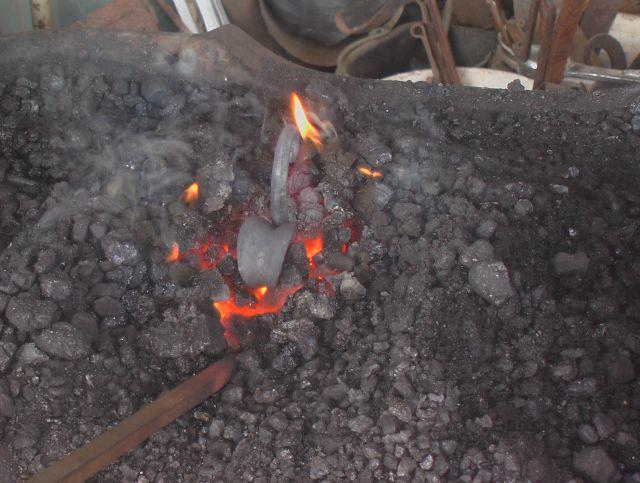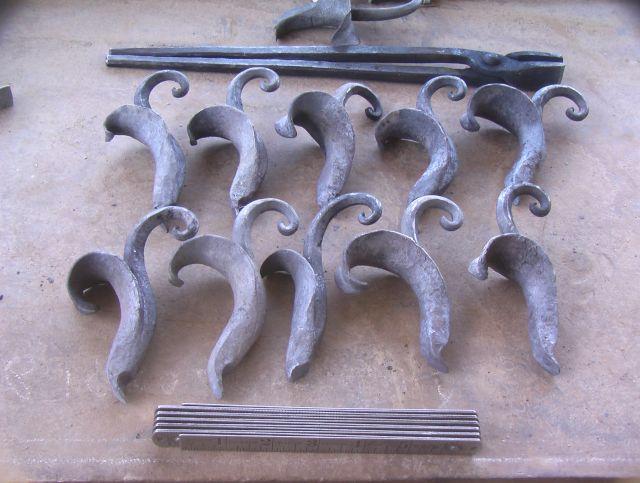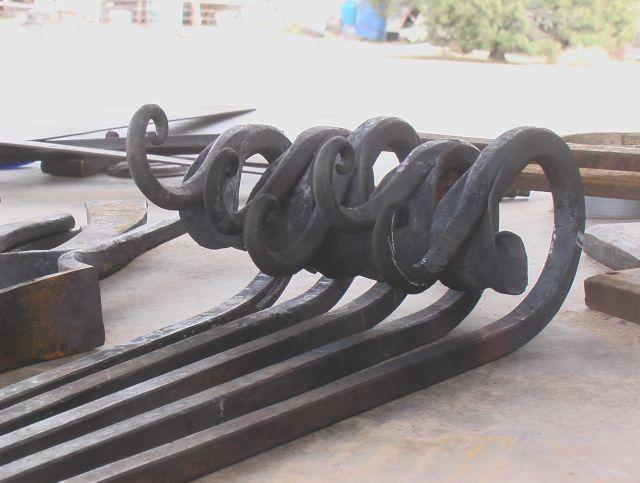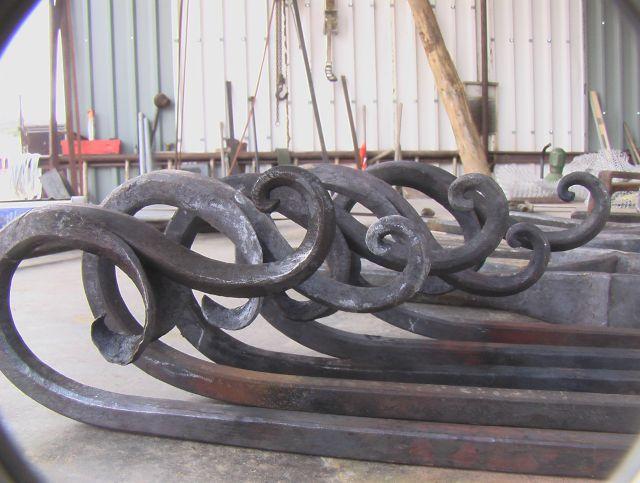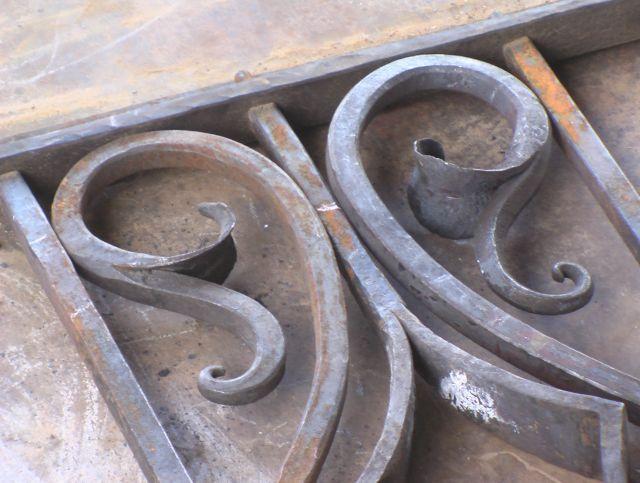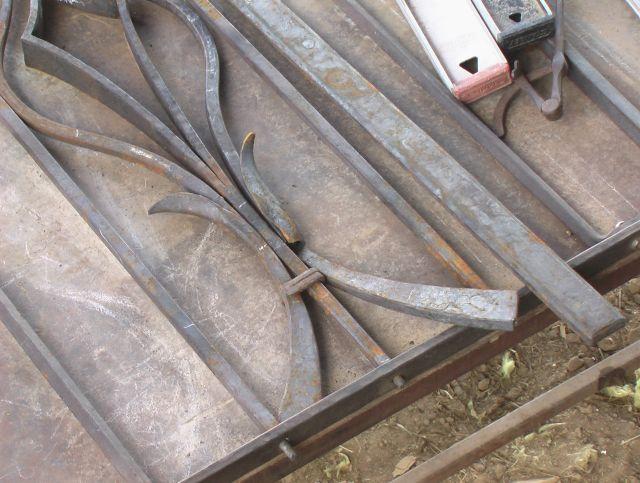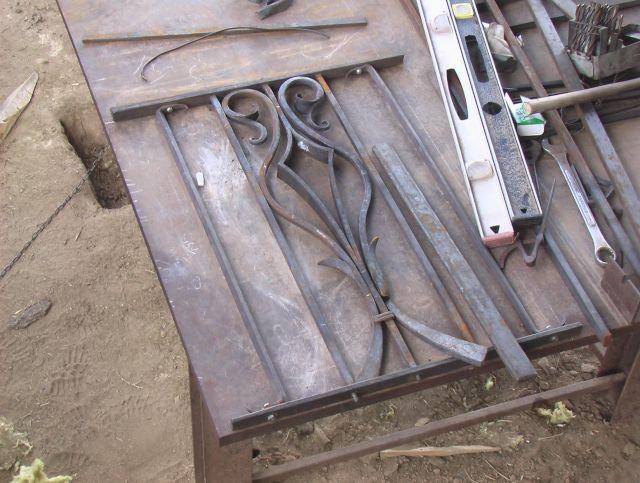-
Posts
3,246 -
Joined
-
Last visited
Content Type
Profiles
Forums
Articles
Gallery
Downloads
Events
Everything posted by anvil
-

How Much Per Hour!! (What is you shop rate)..
anvil replied to jlpservicesinc's topic in The Business Side of Blacksmithing
Jen, you are right, I did not directly answer the OP question. So, to be direct,, I do not have a shop rate neither for my blacksmithing nor when I was a full time farrier. Never have, never will. All my work is one off and I believe that for custom/ comission work a shop rate will either under cut the proper price or price you out of the market. Lol, so I cant give advice on how to establish one. I believe George hit it on the head, a shop rate works best for production work. It makes no difference whether I'm doing an S hook, a decorative nail or a gate or a railing. Each job is unique and my initial routine is to figure out what my client wants, make a sample, get customer approval. I can then give him a time and material bid that satisfies both of us. This is a simplification, but is my general outline for all my work. If I chose to do production work, I would not follow this. I would go to a crafts fair that caters to wholesale buyers for boutiques, have a short precise inventory, and a shop rate suitable for all my products. I would expect to come away from this with a fair amount of a years worth of work and delivery dates etc,etc. This business plan was presented by a husband and wife team decades ago at the Ripley, West VA and the Depere, Wisconsin ABANA conferences and I attended all their business workshops. I believed their advice was right on the money if thats the direction you wanted to go. I was strongly influenced by Frank Turley, Tom Joyce, Francis Whitaker and a dozen or so other smiths who did commission/one off type work that I was involved with. None of these folks, to the best of my knowledge, ever did a business seminar or talked to me directly about how they bid their work. I deduced this by watching their process when I worked with/for them and came up with my own solution to this very critical step in doing a job. In my opinion the most critical item in any bid process, hourly wage, shop rate,by commission or any other way that is rarely to never mentioned by anyone is having a real and honest understanding of your own personal experience level. Without this no bid is valid,,, just numbers grab'd from the stars in your eyes. Its also the hardest to figure out. For what its worth, even to the day, this step is the hardest, most stress causing one of the whole danged process. -
Thanks guys, really miss her. Had another encounter yesterday. One of her deals was to pick up on peoples emotions and draw them to her, give them a massive dose of love and send them away smiling. Sometime a 8 or 10 a day at the grocery store, coffee shop, etc etc. She was a service animal just naturally and VA prescribed did her job. I never interfered with her and others, she just was doing what comes natural. My VA hospital is a couple hundred miles away across some beautiful Colorado high country to Grand Junction., Then I do a round trip back thru Moab, Utah. We were in a small town called Montecello(take a left at the light and head east another 100 miles or so to home,,,) Its the last pit stop on the round trip. I walked up to pay for my sweet roll and coffee and the young lady cashier asked,," Don't you have a lil white dog named Tigger?" "Yup i answered and she said she used to wait on us at Dennys in Cortez and really missed her. I told her she passed in August and she gave me a hug and a shoulder full of tears. That lil dog had friends everywhere, far more than me. They all knew her by name and me as "that guy with the lil white dog named Tigger" Dang, There I was in the middle of the Utah desert, 40 miles or so from the Colorado border, and another 60 or so to get home. A wonderful moment and memory
-
Nice fire set and a real nice detail on the base! My only suggestion is to champfer your edges,,, just my preference.
-
Any blowback I've had goes back thru my hand crank blower(Champion 400). Thats actually the path of least resistance for the little blowback there is. I suspect its more of a carbon monoxide/dioxide buildup than anything else, but thats just my speculation.
-

JLP Blacksmith Teaching Center.
anvil replied to jlpservicesinc's topic in Building, Designing a Shop
Nice work on the conduit, Jen! Catching up,,, I've crossed the high mountain passes of Colorado and surrounding states for decades and loved every pass as a blacksmith and farrier! Then for some unknown reason, about 4 years ago that changed and now a phobia/fear of heights and particularly scary mtn passes rules. Have no clue why. I live close to Mesa Verde and go to Grand Junction and Moab for the VA. I can do Lizard Head pass from here to Grand Junction because I'm on the "right" side of the road, but cannot come back that way,, So I come back thru Moab. Not a bad deal, about a half hour longer and love the canyon lands type terrain. If ya got's lemons, make lemonade. -
Said good Bye to my best friend of the last 17 years last August. Its been hard and still is. We shared the greatest adventure of our lives!
-
I would forge the tentacles one at a time, then forge weld them together. Then make the body and forge weld it to the tentacles. Heres an example. Its obviously not your project, but it is a tendril/tentacle coming out of a body by forge weld. The technique is this type of forgeweld . The elements are whatever you want. The type of detail and the organic look are whats important. Another thought is when making something out of iron, start with a larger size than you might think you need. You have far more leeway for creativity if you start large and forge down to size. Lol, if you stick weld or use a torch, you lose these cool transitions...
-
I just don't seem to have the words. Thank You for all you have done!
-
Actually a good ole traditional hot oil finish works best. 50-50 turps and linseed oil with a little beeswax added. For a quart of each I add an egg sized piece of beeswax. Apply it at a black heat where the mix smokes. It will soak into the iron and be a very pretty and fairly durable finish. If you just use beeswax alone, apply it the same way at a black heat. Beeswax does a few cool things. It transfers your body temp to the iron and creates the subtle feel of warm iron instead of the common belief that iron is cold. And it smells good! I usually rub a carnuba based funiture/car polish/wax in as a final coat.
-
I met a blacksmith from Alaska, one of two brothers, both smiths in Anchorage at the first ABANA conference at Flagstaff long ago. He told me that there were few smiths in Alaska and most used propane because shipping from Seattle made is pretty cost prohibitive. I doubt thats changed. You are correct on ash,, and without a doubt the ash removal problem is far better solved with a bottom blast. Sheesh, at the very least gravity works on your side, and it all falls down and goes out the ash hole with a quick flip of the wrist. Far better than dropping down a door, raising your fire up and raking it out horizontally. John, If I were to build a side draft, I would line it with castable refractory. Theres no reason that one or the other type of blast works better than another in this case. I doubt charcoal is any different there as here. Basically its too expensive to buy for more than casual use or bragging rights, and too time consuming to make. So I'll take what that smiths told me a few decades ago and guess that most smiths in your area,,, including you most likely,, use propane. Fits what you have said about your experience above with both types of blast. So no matter what, Frosty, I appreciate your suppositions and am glad to respond to them based on my experience as a full time smith.
-
I did mention how to remove ash above. As for not cleaning it out because it becomes part of the fill material,,, well,,, doesn't the fill material grow when you add ash? Its ash, not magic dust! And it certainly, over a short time, will trash your fill if you don't remove it, or am I missing something? My ash bucket gets filled every week or so with ash and other forge gradoo. To my way of thinking, removing the ash is the best solution. Its a major part of having a clean fire, no matter where the air comes from. To me, ash removal and a dirty fire are the main problem with a side blast. The best setup for removing ash from a sideblast that I've seen and used was a drop down door on the operator side of the forge. Drop down the door, raise the coke with your poker, and pull the ash out twards the operator with a rake. Again, my purpose is to show the problems you will encounter, not say don't use it. Your forge was a fine work, and I'm sure brought you much joy, as all hand made tools should.
-
Well, Frosty, I appreciate your input, but will stick by what I said. I will qualify it and focus on the western world. They are rare and really not used in the west very much. I'd say at least since the 9th century a bottom blast has been the norm. Thanks for the Greystone forge site. I checked it out and it looks just like the one JHCC made and was referred to. Nice to see that they are available. I think there are 5 or 6 folks who make bottom blast here in the USA. Do you happen to have any sources for others manufacturing and selling side draft anywhere? I'd be interested if you do. Yup, they all have the same problems I list above. I don't think I mentioned removing clinker in my posts above, did I? Didn't need to bring up the obvious. I did mention ash, and removing it is the major problem as I stated. Do you really think having a fire that has different temps at different distances and unreachable depths from the inlet is a plus? Sheesh, my man, I'd much rather have a constant temp throughout that is changed easily and quickly by changing the air input instead of moving my irons around the forge for each needed sweet spot. But hey, to each his own. I can't even imagine building a railing and not having a constant temp when I have 6-8 pickets in the fire doing tenons or whatever. That is my experience speaking, not to mention those I have worked with. I suspect that if a side blast were a better heat source, the great traditional smiths of our time would be using them as well as at ABANA conferences etc,etc. But thats just not the case. I'm sure there is a good reason for that, don't you think? And yes both have advantages and disadvantages and these have no bearing on operator experience. It boils down to do the advantages of a side blast out weigh the disadvantages so that I ought to have a dedicated setup in my space, or is it better to just rig up a trench on the floor for the rare times I need the advantages and am willing put up with the disadvantages. Again an experience call. And yes, all the disadvantages can be dealt with, it just takes compromise of technique. Why shucks, I'd go so far as to say that if you canvassed all the shops in Alaska, dollar to a donut that finding working side blast would be slim pickins if any. No trap, Frosty, just experience and common sense. Having said that, If it is what you want to use, then go for it. They will do the job and certainly have a strong "cool factor". Also, with out a doubt they are perfect for unique situations, which is where my experience with them comes in. in these few situations they were great. And when the job was done, I filled in the hole on my floor and went back to my bottom blast. My purpose here is very simply to do what these forums are all about and that is to add info that may not have been brought up. So Frosty, if this info is causing you a problem, then hey, it aint the first time is it? Puzzles me as to why, but oh well.
-
Howabout dinner bells. Fun project and its something to call folks to dinner when its time. I make mine out of coil spring
-
Very cool story and a very nice knife!
-
I use mine to the day, Feels and works as good now as 200 years ago.
-
My interest in rammed earth came from "The Mother Earth News" mag shortly after getting out of the service. It really grabbed me and led to a strong interest in adobe. Three other styles I got grabbed by were swedish cope log, timber framing and rock. I built a log home, did a stone, iron and log shop and got involved with timber framing via my smithing. My daughter had me come to New Mexico to build an adobe, log and iron home for them but she and hubby couldn't get past the design stage. Dang, close for adobe, but hey,, So doing a rammed earth forge is very doable and would look good. My experience with a side blast leads me to believe that it works as you say and works well if you are forging a few hours a day and when you return, you clean out your forge and start new which is a good practice. But when you have to break your fire down multiple times a day to maintain a clean fire, there lies the problem. Coke still is on the bottom of the firepot and below the nozzle. This coke burns and it gets mixed with the ash and gets carried up onto your work. If your coke makes a good coke ring, you can lift it up with your poker and get your rake under the coke and rake out the fines. However, with coal that has a high % of ash and doesn't make a good solid coke ring, you are just plane sol. My other critique is the quality of the actual fire ball. A bottom blast with a good triangular shaped ball will channel the air outwards twards the fire pot walls and not straight up.This means the oxygen is not directly on your iron but burns from the outside in making a real nice consistent heat ball envelope surrounding your work and the ox is consumed long before it contacts your work. The air from a side blast on the other hand, comes horizontally out the nozzle and directly comes into contact with your coke. So instead of the sloped walls, the irregular shape of and spaces inbetween the coke determine the relatively helter skelter flow of air which makes a far less consistent fire ball. These are certainly small details, but like they say,, the devil is in the details and these differences really become evident with use. Personally I think that the interest in side blast is because this type of forge is rare so its fun to play with. However, I suspect that there is a huge predominance in bottom blast type forges for a good reason.
-
Lol, what a hoot! Defining one if these thangs is like defining a snowflake,,, each is different. I'm challenged enough with Scotts original pic. To keep it simple, like you first said, my way would be with some variation of hammer and chisel. How would I make and use them? Whatever my description brings to mind,, make one, then put it where ya thinks it ought to go and hit it as hard as you think will do the job,,,repeat til either your scrap pile is over flowing, you'r burned out, or you like what ya done...
-
A clinker breaker is like a night to day upgrade if you haven't used one. At its simplest, Rotate the handle once or twice and the ash is gone. Fire is not disturbed. Thats why I don't use a side draft. Clinker ball or breaker is kinda misnomer. Its more of a way to get rid of ash and fines, which happens a lot during a forging session. So not disturbing the fire is pretty important. I've actually never seen a firepot that doesn't have one as part of the design. It's my only gripe with a JBOD. I can't imagine not having one. I'm pretty sure I know how to use and maintain a side draft forge. I don't know any other way than to raise or move the coke then put a rake in under the coke and drag the ash and fines out twards you.
-
Words are harder than the actual work. I'll find the tool and take some pics. What I described is from Daryl Nelson, Fire Mountain Forge and his techniques for making animal heads. I've noticed he has new vids on youtube. They are worth watching.
-
Yea, I at first thought oval but the sides seem a little flat for an oval,,, lol, in this case put ovaloid as a variation on "ovalish",,,
-
Yup, and breaks up your fire.

